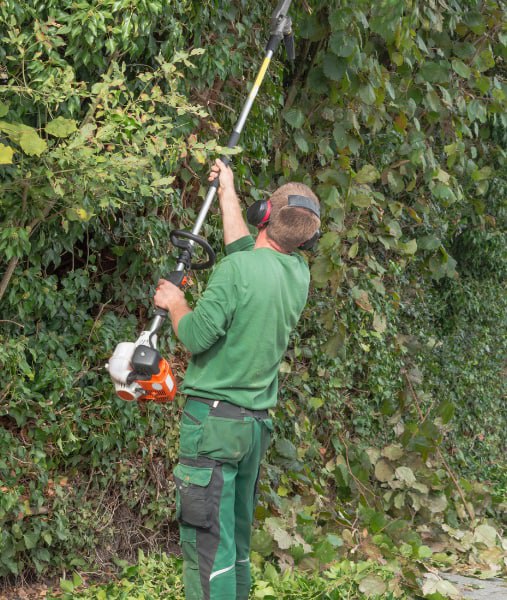When it comes to garden maintenance, one of the most common issues homeowners face is dealing with tree stumps left behind after a tree has been felled. These unsightly remnants can hinder the aesthetic appeal of your garden, cause tripping hazards, and attract pests. Fortunately, stump grinding offers a simple, effective solution to these problems, leaving your garden cleaner, safer, and more functional. In this article, we’ll explain how stump grinding works and how it can significantly improve the overall condition of your garden.
1. What Is Stump Grinding and How Does It Work?
Stump grinding is a tree surgery technique that involves the use of a specialised machine to grind down the remaining tree stump into small wood chips. The process typically removes the stump and some of the root system, depending on the size of the stump and the surrounding area. Unlike stump removal, which involves digging out the entire root ball, stump grinding focuses on reducing the visible stump to below ground level, ensuring that the area is level and free from obstruction.
Stump grinding is a quick, non-invasive process that leaves behind a pile of wood chips, which can be used as mulch for your garden or removed as required.
2. Improved Aesthetics and Space
One of the primary reasons homeowners opt for stump grinding is to improve the appearance of their garden. Tree stumps can be an eyesore, disrupting the natural flow of your outdoor space. They can also make it difficult to mow the lawn, plant new vegetation, or install features such as patios or garden furniture.
By grinding down the stump, you remove this obstruction and open up more space for landscaping. Whether you plan to replace the tree with new plants, install a garden path, or simply enjoy a clear view, stump grinding helps create a more polished and functional outdoor environment.
3. Increased Safety
Tree stumps can be dangerous, especially if they’re located in high-traffic areas of your garden. They pose a tripping hazard for children, pets, and adults, particularly in the dark or during poor weather conditions. By having your tree stumps ground down, you eliminate these risks and make your garden safer for everyone who uses it.
In addition to tripping hazards, stumps can sometimes be sharp and jagged, which can cause injury if someone comes into contact with them. Grinding down the stump ensures that it’s no longer a potential source of injury, contributing to a safer environment for your family and visitors.
4. Pest Control and Disease Prevention
A tree stump left to decay naturally can attract a variety of pests, including termites, ants, and fungi. These pests can spread throughout your garden, causing damage to other plants, trees, and even the structure of your home. Additionally, decaying stumps can harbour diseases that might infect nearby healthy trees or plants.
Stump grinding helps prevent these issues by eliminating the decaying material and stopping the spread of pests and diseases. The removal of the stump also reduces the likelihood of attracting new pests to your garden, promoting a healthier outdoor environment for your plants and trees.
5. Easier Lawn Maintenance
If you’ve ever tried to mow around a tree stump, you’ll know how challenging it can be. The uneven surface can damage your lawnmower or make it difficult to get a clean cut. With the stump removed through grinding, you can easily mow the area, ensuring your lawn remains neat and tidy. Additionally, grinding the stump down to ground level creates a smooth, even surface that’s ideal for lawn maintenance and other landscaping tasks.
Conclusion
Stump grinding is a practical and efficient solution for maintaining a cleaner, safer garden. By removing tree stumps and their associated risks, you can enjoy a more aesthetically pleasing outdoor space, improve safety, prevent pest infestations, and make lawn care easier. Whether you’ve recently had a tree removed or simply want to tackle an old stump in your garden, stump grinding is the best way to restore your outdoor space to its full potential.
If you’re in Sheppey, Kent, and need professional stump grinding services, Sheppey Tree Surgeons are here to help. Our team has the expertise and equipment to safely and efficiently grind down any tree stump, ensuring that your garden remains a beautiful, functional, and safe environment. Contact us today to learn more about our stump grinding services and how we can assist with all your tree surgery needs.
Call us on: 01795 718597
Click here to find out more about Sheppey Tree Surgeons
Click here to complete our contact form and see how we can help with your tree’s needs.
